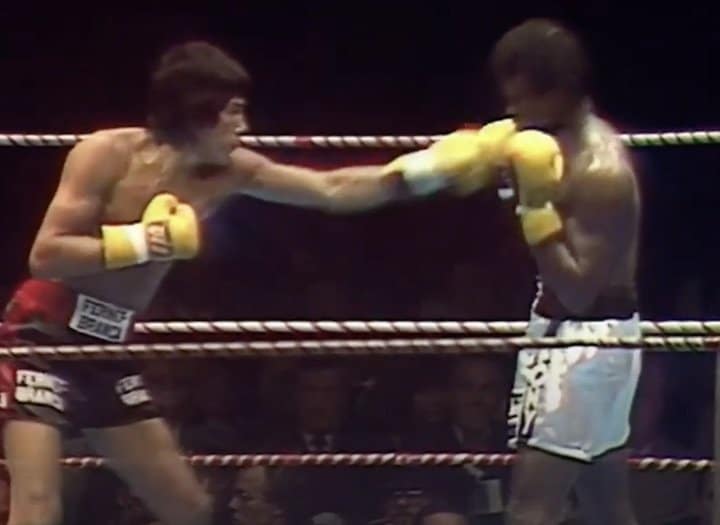Carlos Monzon famously said he was a better, greater middleweight champion than Sugar Ray Robinson. Perhaps the Argentine legend who ended up disgraced, ruined, and jailed for murder was right. With the quite superb Netflix docu/drama on Monzon seeing to it that “Escopeta” (Shotgun) is in the news and being discovered by a brand new generation of fans, plenty of articles have been written about the warrior who ruled the 160-pound division from 1970 to 1977.
Many fans say Marvin Hagler is the greatest middleweight champion ever. Others point firmly at Harry Greb. Robinson, of course, has his supporters, even if Sugar was at his very best at welterweight. Some fans argue how Bernard Hopkins deserves to be ranked as the best ever at 160 pounds.
But Monzon was very, very special.
Monzon, at one time, held the division record for most world title defenses – 14 in all. Tough, clever, willing to face the best, and a natural middleweight, Monzon stamped his authority on one of boxing’s classic weight divisions.
Monzon lost three points verdicts early on in his career, and he also picked up no less than nine draws. But after the ninth of these ties, which came in early 1969, Monzon would win every single fight he ever had. By the year 1970, the 28-year-old was ready to challenge for the world title. Going in with the great Italian, Nino Benvenuti, in a fight held in the defending champ’s home country, Monzon, a huge underdog who virtually nobody outside of Argentina had even heard of, made the most of his big chance.

Monzon ripped the WBC and WBA titles from the 32-year-old via a TKO in the 12th round, and he was the new middleweight king of boxing. Monzon was now a hero in his homeland, while the Benvenuti fight was so good Ring magazine called it the battle of the year for 1970.
Those impressive fourteen retentions followed. Starting with a rematch with Benvenuti in May of 1971 (a quick third-round stoppage win), Monzon went on to take care of every single worthwhile challenger that was out there. Such top-class fighters as Emile Griffith (twice), “Bad” Bennie Brisco, Jose Napoles, and Rodrigo Valdez (twice) were beaten. Monzon was treated like a rock star at home, and all across the world, he was looked at as the best fighter in the world, save for Muhammad Ali and Roberto Duran.
Crazily, Monzon found himself stripped of his WBC belt in 1974 for fighting Napoles and not Valdez. This threat to his superiority would soon be taken care of, though.
After three defenses of his WBA belt, Monzon met Colombia’s Valdez, who had stopped Briscoe to take the vacant WBC title. Proving beyond any doubt that he was the real middleweight king, “Escopeta” would beat Valdez twice, both times by unanimous decision. Still, Valdez proved to be a tough cookie, even flooring Monzon in the second fight. Just shy of his 35th birthday, Monzon wisely hung up his gloves while still being on top. After a career total of an even 100 fights (one no-contest), and after having made a long-lasting world record number of defenses, the all-time great had done enough.
But Monzon did not enjoy a quiet retirement. A heavy drinker and then some, Monzon was guilty of domestic violence, brawling, and ultimately murder. At first, Argentinians refused to believe their hero had murdered his wife, Alicia Muniz. But sure enough, the former champion’s guilt was proven, his name sullied. It was a spectacular fall from grace. Monzon was jailed for 11 years. The graphic nature of the born fighter’s wild side and the ghastly murder (and attempted cover-up) of Muniz makes for pretty disturbing viewing in Netflix’ “Monzon.”
In January of 1995, upon driving back to prison having been allowed a weekend furlough, Monzon, driving at great speed, lost control of his car and died upon impact. Some said it was suicide; guilt over what he had done to Muniz that early morning in February of 1988.
That’s very much debatable. Almost as questionable as to whether or not Monzon deserves to be called the greatest middleweight champion ever.
